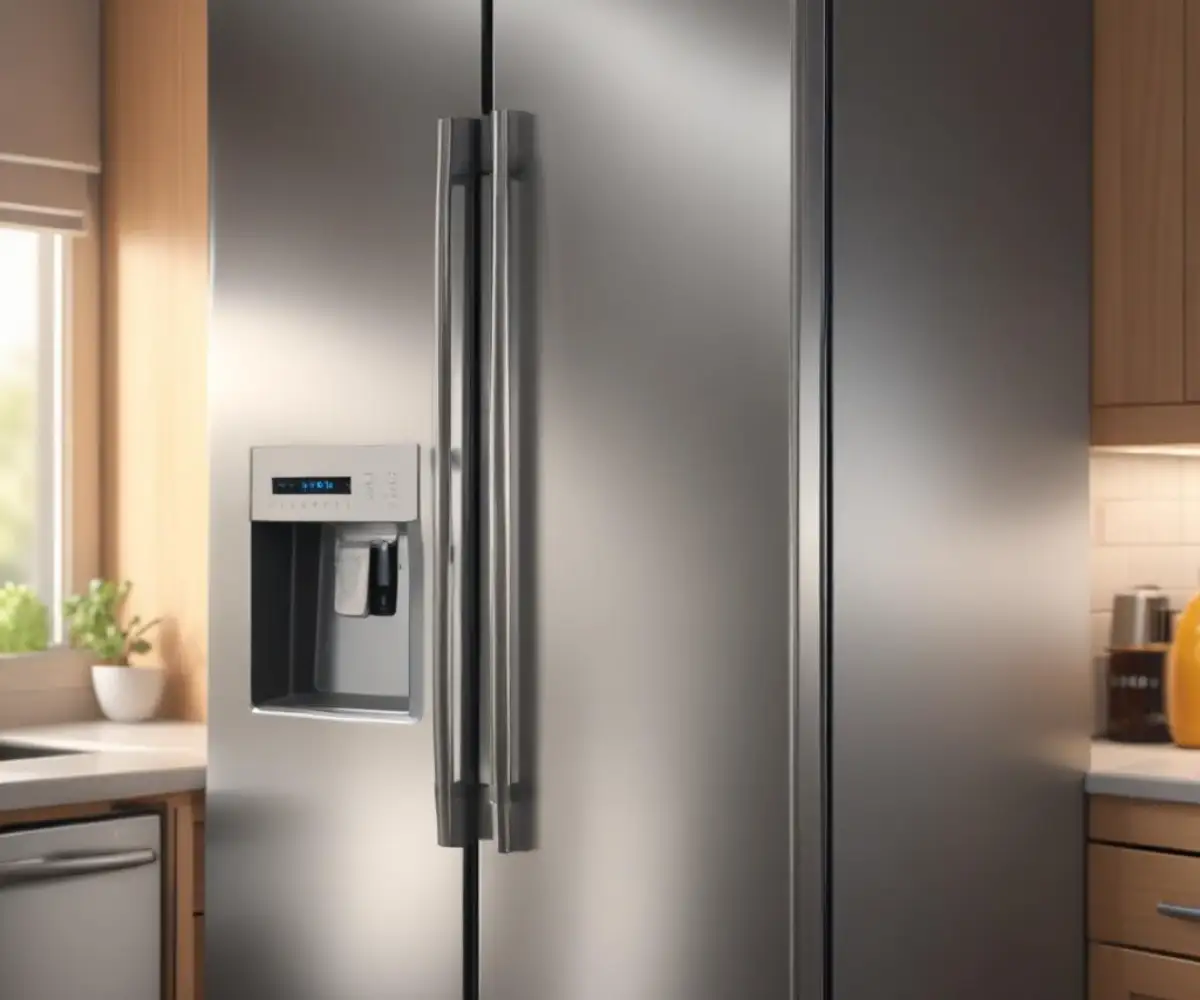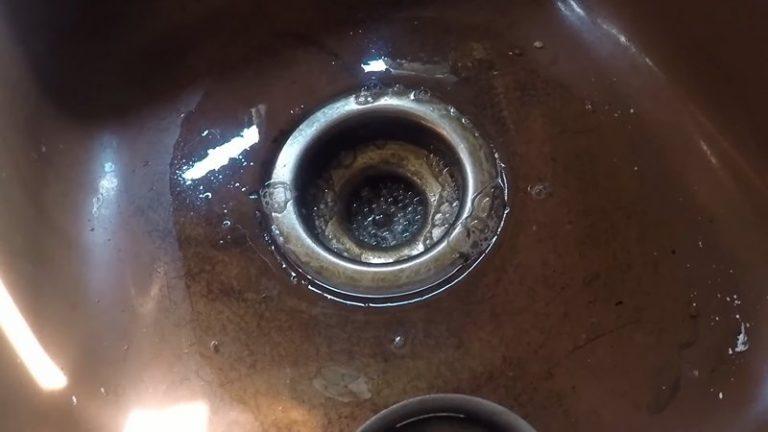Samsung 14 E Error Code: Your Quick Fix Guide is Here!
That sinking feeling is unmistakable. You walk to your high-tech Samsung refrigerator for a refreshing drink, and a cryptic error code, 14 E, is blinking on the digital display. Your mind immediately jumps to expensive parts and frustrating calls with technicians.
This error code can bring your appliance’s convenient ice-making feature to a grinding halt. But before you panic, understand that this is a common issue with a clear, identifiable cause.
This guide will demystify the 14 E error, explain exactly what it means, and provide a step-by-step process to diagnose and fix it yourself, potentially saving you hundreds of dollars.
You'll Learn About
What the 14 E Error on Your Samsung Fridge Really Means
The 14 E error code on a Samsung refrigerator is a specific communication fault. It indicates that the main control board has lost its connection with the ice maker’s sensor. Essentially, your fridge’s brain can’t get a status update from the ice-making department.
This sensor is critical for the ice maker to function correctly. It performs several key tasks, including detecting if the ice bin is full, monitoring the temperature to ensure cubes are properly frozen, and signaling the mechanism to eject the ice.
When this communication breaks down, the refrigerator’s programming triggers the 14 E code as a safety measure to prevent damage, like overfilling with water or running the motor endlessly.
Top 4 Causes Behind the Dreaded 14 E Code
Understanding the root cause is the first step toward an effective solution. While it points to a sensor fault, several underlying issues can trigger the 14 E error.
1. A Defective or Failed Ice Maker Sensor
This is the most frequent culprit. The constant cycle of freezing and slight thawing inside the ice maker compartment creates a harsh, moist environment. Over time, moisture can penetrate the sensor, causing it to short out and fail.
The sensor simply wears out from years of service. It’s a small electronic part that eventually reaches the end of its operational life.
2. Jammed Ice Maker Mechanism
Sometimes, the problem is purely mechanical. An ice cube can get stuck during the ejection cycle, preventing the rake or arm from completing its movement. This physical obstruction stops the ice maker from proceeding to its next step.
If the sensor is waiting for a signal that the ice has been ejected, but the mechanism is jammed, the control board may interpret this as a sensor failure, triggering the 14 E code.
3. Loose or Damaged Electrical Connections
The ice maker is connected to the main control board via a wiring harness. This harness is a bundle of wires with a plastic clip connector. If this connector becomes loose or if one of the wires is damaged, the signal is interrupted.
Vibrations from the refrigerator’s compressor or simply the process of removing and re-inserting the ice bucket can sometimes be enough to jostle this connection loose.
4. A Temporary Control Board Glitch
Modern refrigerators are essentially computers, and like any computer, their software can sometimes experience a temporary glitch. A minor power surge or a momentary software hiccup can cause the main control board to display an error code falsely.
In these cases, there might not be a physical problem with the ice maker at all. The system just needs a simple reboot to clear the error from its memory.
Step-by-Step Guide to Fixing the 14 E Error Code
Now, let’s get hands-on. Follow these steps in order, as they start with the simplest fix and progress to more involved solutions. Always unplug your refrigerator from the power outlet before inspecting or replacing any electrical components.
Step 1: Perform a Hard Reset (Power Cycle)
The first and easiest troubleshooting step is to perform a hard reset. This can clear any temporary glitches in the refrigerator’s main control board.
Simply unplug the refrigerator from the wall outlet. Wait for at least 5 to 10 minutes to allow the internal capacitors to fully discharge, clearing the appliance’s active memory. Then, plug it back in and monitor the display for a few minutes to see if the error code returns.
Step 2: Inspect the Ice Maker for Jams
If the reset didn’t work, the next step is a physical inspection. Remove the ice bucket completely so you have a clear view of the ice maker assembly. Look carefully for any lodged ice cubes in the tray or obstructing the ejector arm.
If you see a jam, use a plastic spoon or spatula to gently dislodge the ice. Never use a sharp object like a knife or screwdriver, as you could easily puncture the plastic tray or damage the mechanism.
Step 3: Manually Test the Ice Maker Cycle
Most Samsung ice maker models have a small test button. Its location can vary, but it’s often a small, rectangular rubber button on the side or underside of the ice maker’s motor housing. Press and hold this button for about 3 seconds.
A successful test cycle involves the ice maker arm rotating, the tray twisting to eject any existing ice (have a towel ready), and then refilling with water (you should hear a distinct ‘buzz’ as the water valve opens). If the ice maker successfully completes this cycle, your problem may be solved. If it doesn’t move or makes grinding noises, the unit itself is likely faulty.

Step 4: Check the Wiring Harness Connection
If the manual test fails or the error persists, check the electrical connection. Look for the wiring harness that connects the ice maker to the back or side wall of the freezer compartment. Firmly press on the plastic connector to ensure it is seated securely.
Unclip it, inspect the pins for any signs of corrosion or moisture, and then clip it back in, making sure you hear or feel it click into place. A secure connection is vital; a poor connection can be as disruptive as a broken part, much like how an over-range microwave in a cabinet that is too low can cause unforeseen operational issues.
Quick Diagnostics Table: From Symptom to Solution
Use this table for a quick reference to match what you’re observing with the most likely cause and the action you need to take. This helps streamline your troubleshooting process.
| Symptom | Most Likely Cause | Recommended Action |
|---|---|---|
| 14 E error code on display | Control board glitch or sensor failure | Perform a hard reset first. If error returns, inspect and test the ice maker. |
| Ice maker is silent, not cycling | Jammed mechanism or faulty motor | Check for ice jams. Press the manual test button to check motor function. |
| Clicking or grinding noises | Mechanical jam or stripped gear in the motor | Unplug and inspect for physical obstructions. Persistent noise indicates a failed unit. |
| Test button does not initiate a cycle | Loose connection or completely failed ice maker | Check wiring harness connection. If secure, the entire ice maker assembly likely needs replacement. |
Advanced Step: Replacing the Ice Maker Assembly
If you’ve determined the ice maker unit is faulty, replacing it is often a straightforward DIY job for those comfortable with basic repairs. This approach focuses on a single component, much like learning how to remove a single paving slab without disturbing the entire patio.
You will need to order a replacement part specific to your Samsung refrigerator model. First, turn off the water supply valve to the refrigerator. Then, remove the ice bucket, unscrew the one or two mounting screws holding the old ice maker in place, disconnect the wiring harness, and pull the old unit out. Install the new unit by reversing these steps.
A Note on Component Quality
When selecting a replacement part, always opt for an OEM (Original Equipment Manufacturer) part if possible. While aftermarket parts can be cheaper, their quality and compatibility can be inconsistent. Making the right choice in components is as crucial as it is when weighing options for home fixtures, such as deciding between Blinds.com vs Levolor for your windows.
How to Prevent the 14 E Error from Happening Again
Once you’ve fixed the problem, you’ll want to keep it from coming back. A few simple maintenance habits can significantly extend the life of your ice maker.
Maintain Optimal Freezer Temperature
Your freezer should be set to 0°F (-18°C) for efficient operation. If the temperature is too high, the ice maker may struggle to freeze cubes properly, leading to jams. If it’s too low, components can become brittle.
Change Your Water Filter Regularly
A clogged water filter reduces water flow to the ice maker. This can result in smaller, misshapen ice cubes that are more prone to jamming the mechanism. Replace your water filter every six months as recommended by the manufacturer.
Empty the Ice Bin Periodically
If you don’t use a lot of ice, the bin can become a solid block as cubes slowly melt and refreeze together. It’s good practice to empty the bin completely every month or two to prevent large ice chunks from forming and causing blockages.
When You Should Call a Professional Technician
While many 14 E errors are fixable at home, there are times when it’s best to call for professional help. If you have followed all the steps above and the error code persists, the issue may lie with the main control board, which requires expert diagnosis and repair.
Furthermore, if you are not comfortable performing any of these steps, especially those involving electrical components, do not hesitate to schedule a service call with a certified Samsung appliance technician.
Conclusion: Taking Control of Your Appliance
The Samsung refrigerator 14 E error code is an intimidating but manageable problem. It’s a highly specific fault that almost always points directly to the ice maker system. By following a logical troubleshooting process, you can often diagnose and resolve the issue without needing a costly service visit.
From a simple power reset to checking for jams and testing the unit, you now have the knowledge to tackle this error head-on. A functioning ice maker is a convenience you paid for, and with these steps, you can get it back up and running smoothly.

